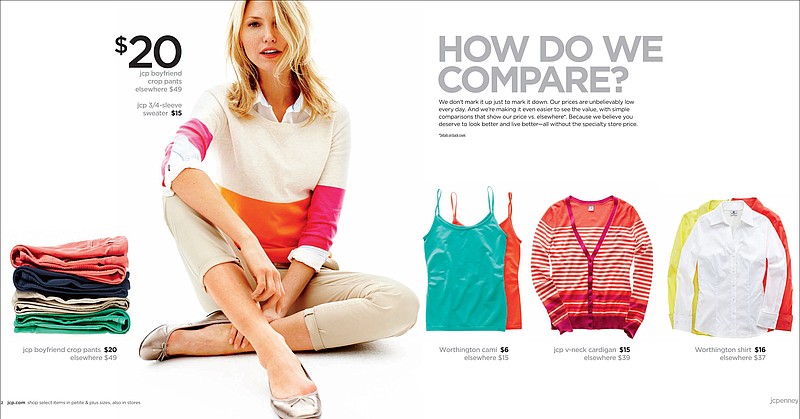NEW YORK (AP) - J.C. Penney is bringing back sales.
The struggling department store chain this week will begin adding back some of the hundreds of sales it ditched last year in hopes of luring shoppers who were turned off when the discounts disappeared, CEO Ron Johnson told The Associated Press.
Penney also plans to add price tags or signs for more than half of its merchandise to show customers how much they're saving by shopping at the chain - a strategy used by a few other retailers. For store branded items such as Arizona, Penney will show comparison prices from competitors.
The moves are a reversal for Penney on the eve of the one-year anniversary when it vowed to almost completely get rid of the sales that Americans covet but that cut into a store's profits. The idea was to offer everyday low prices that customers could count on rather than the nearly 600 fleeting discounts, coupons and sales it once offered.
The bold plan has been closely watched by others in the retail industry, which commonly offers deep discounts to draw shoppers. But so far the experiment has served as a cautionary tale of how difficult it is to change shoppers' habits: Penney next month is expected to report its fourth consecutive quarter of big sales drops and profit losses. After losing more than half of its value, Penney stock is trading at about $19. And the company's credit ratings are in junk status.
Johnson, who rolled out the pricing plan shortly after taking the top job in November 2011, told The Associated Press that the latest moves are not a "deviation" from his strategy but rather an "evolution."
"Our sales have gone backward a little more than we expected, but that doesn't change the vision or the strategy," says Johnson, who previously masterminded Apple Inc.'s retail stores and Target Corp.'s cheap chic fashion strategy. "We made changes and we learned an incredible amount. That is what's informing our tactics as we go forward."
But critics say that Johnson is backpedaling. Walter Loeb, a New York-based retail consultant, says Johnson "is now realizing that he has to be more promotional to attract shoppers."
The pricing strategy has been a key part of Johnson's plan to reinvent Penney, which had failed to change with the times as its competitors updated their stores to make them cool places to shop. The plan includes adding hip new brands such as Joe Fresh and replacing racks of clothing with small shops-within-stores by 2015. But this isn't the first time the pricing strategy has been tweaked.
When it was rolled out in February 2012, the plan entailed permanently slashing prices on everything in the store by 40 percent. Instead of the 600 or so sales and coupons it used to offer, Penney decided to have just 12 monthlong sales events on some merchandise. And there would be periodic clearance events throughout the year.
But the new pricing plan wasn't well received on Wall Street or Main Street, so six months after launching it, Johnson ditched the monthlong sales, saying that they were too confusing to shoppers. Johnson says Penney has learned that people don't shop on a monthly basis, but rather they buy when they need something for say, back-to-school or during the winter holidays. And during those times, he says, they're looking for even more value.
"I still believe that the customer knows the right price, but they want help," he says.
Penney declined to say how many sales events it will offer going forward, citing competitive reasons. But the company says the figure will be well below the nearly 600 that it used to offer. The company says the discounts will vary depending on the sale. From Feb. 1 through Feb. 14, for instance, shoppers will get 20 percent off some jewelry for Valentine's Day. One example: half carat diamond heart pendants on sale for $96, below Penny's everyday price of $120.
Penney says the decision to add tags or signs on much of its merchandise that shows the "manufacturer's suggested retail price" alongside Penney's "everyday" price was a result of his realization that shoppers want a reference price to consider. National brands were also asking Penney to show the suggested price to shoppers, he says. Penney began showing the suggested manufacturer's price on Izod men's merchandise last fall, and was encouraged by the response.
Burt Flickinger, a retail consultant, says the move could help Penney because manufacturers' suggested retail prices can be as much as 40 percent higher than what retailers wind up charging. The practice is common in the home appliance industry but spotty in the department-store industry because stores generally hike prices up even more to give shoppers the illusion of a big discount, he says.
"The strategy will be helpful for shoppers to understand lower prices," Flickinger says. "At the same time, it will be tough to get consumers back in the store from competitors."

